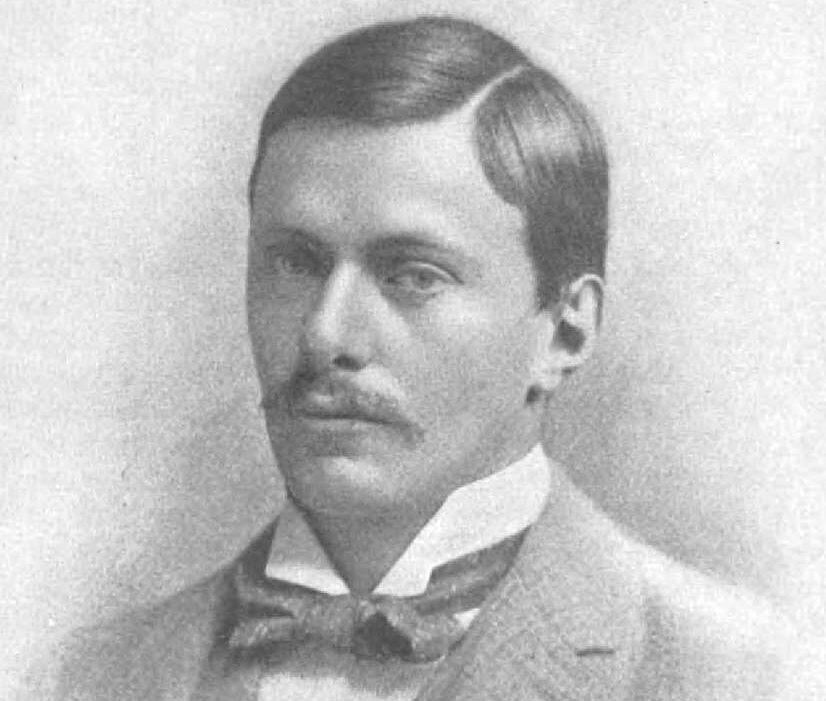The much-loved Tilling novels of EF Benson are, as is so well-known, set in Rye. Many of the characters were based on people that Benson knew, not necessarily from the town. For instance, the characters of both Mapp and Lucia were, to some extent, based on the novelist Marie Corelli. From her comes Lucia’s pretence at speaking fluent Italian (Corelli also claimed Italian ancestry although her real name was Mary Mackay) while, like Mapp, Corelli was once caught illicitly hoarding food. Georgie Pillson is based on Benson himself. It seems that the Tilling characters have survived. According to an actress in the 2014 Mapp and Lucia production, a local resident told her that she could name the current Mapp and Lucia.
But who, I wondered, was the model for Colin Stanier, Earl of Yardley, in Benson’s much darker novel, Colin, first published in 1923? We know that the Tudor family house, Stanier, on a hill overlooking the town, was based on Leasams. There is some artistic licence here of course. Stanier is Tudor, whilst Leasams, although originally built in the middle ages, is quite distinctly Georgian in character. We know that Benson was a friend of the owners of Leasams, Sir George and Lady Maud Warrender. Sir George was an admiral, while his wife was the grand-daughter of the great philanthropist the Earl of Shaftesbury. There is a memorial to Sir George in St Mary’s church in Rye. Lady Maud was a noted contralto, popular in local concerts.
The wealth of the Earls of Yardley dates back to the reign of Elizabeth I, when Colin Stanier, a poor shepherd, enters into a pact with the devil. Their wealth will increase so long as each earl renews the pact. In the hall of Stanier is a portrait of the first Earl, with the supposed pact, signed in blood, with it. They have wealth, power and influence but, “love can find no seed cranny in their hearts.” Any woman who marries into the family, “freezes in the arctic cold of lovelessness.” The original Colin Stanier saved Queen Elizabeth I when her horse slipped on cobbles in Rye. She commands him to meet her at the manor of Brede. From then, and for the next 10 years, his wealth and power increase, with an earldom and the Order of the Garter.
The Colin who is the subject of the book is an unpleasant, almost evil man. He allows his older brother, Raymond, to drown and freeze to death when he falls through the ice while skating. He has already taken Raymond’s fiancée from him. There is no love lost between the brothers. When a killer escapes from a local asylum and steals a shotgun, Raymond sees the opportunity to shoot his brother when he returns on his motorcycle after playing golf on the links outside Rye. Colin is saved because of a puncture, and, walking back through the woods, sees Raymond waiting, shotgun resting on a wall.
He makes Raymond accept a very hard slap on the face, then forces him to sign a confession, which he himself witnesses and asks their father to sign, without seeing what is on the paper. The paper is then sent on to his bank for safekeeping. The handwriting of the two brothers is almost identical, so Raymond writes to Colin’s bank, as Colin, and instructs them to send the paper to Raymond. On the day of Raymond’s death, Colin, looking for a piece of waste paper to light his cigarette, finds an empty envelope from his bank in the waste paper basket. When Raymond is found under the ice, his body is brought back to the house, and his belongings handed to his father. The witnessed paper is in his pocketbook. Lord Yardley was never fond of his son and heir, and the discovery of his intent to kill his brother does not help foster any post mortem regrets.
It is likely that the character of Colin is based on Oscar Wilde’s Dorian Gray, rather than any Rye resident known to Benson. First published in 1890, in Lippincott’s Monthly Magazine, it was published as a full-length novel the following year. Gray had his portrait painted and wanted to sell his soul to the devil, so that the portrait would age while he stayed in his prime of youth and beauty. The story ends when Gray, who has murdered the artist, stabs the painting. When his servants find him, the portrait miraculously portrays a young man, whilst the ancient, withered corpse is only recognised as Gray by a ring.
Image Credits: Public domain/Wikimedia Commons https://creativecommons.org/publicdomain/mark/1.0/ https://creativecommons.org/publicdomain/mark/1.0/.



